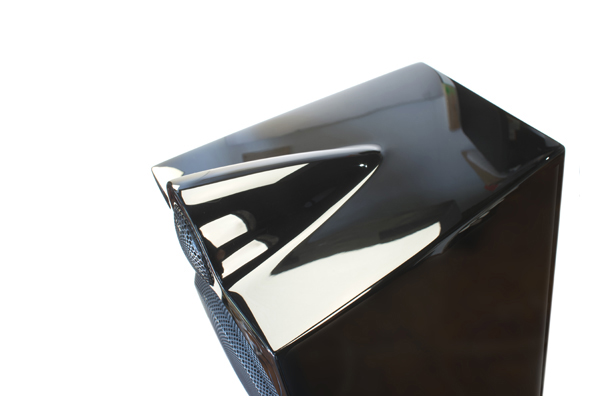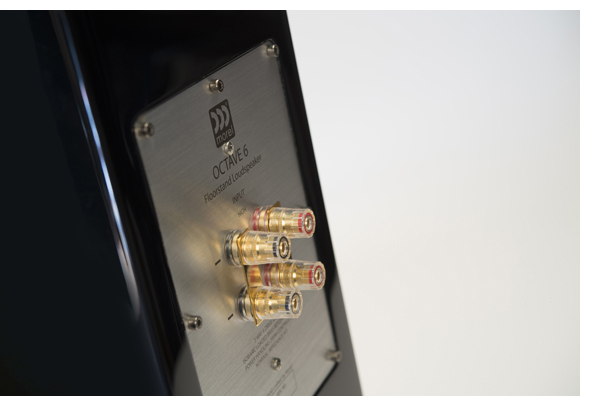 Though I knew little about Morel before this review, after listening to its new Octave 6 Limited floorstanding speakers, the company now has my attention. Based in Israel, Morel builds car speakers, in-walls, and various standalone options, as well as its own drivers. Morel has been a manufacturer of premier drivers for a number of major speaker companies for some time now, however while all of their drivers share core technologies, the ones utilized in their own systems are built from scratch and customized for that individual speaker. Everything from crossover to the drivers is done in house, except for cabinetry.
Though I knew little about Morel before this review, after listening to its new Octave 6 Limited floorstanding speakers, the company now has my attention. Based in Israel, Morel builds car speakers, in-walls, and various standalone options, as well as its own drivers. Morel has been a manufacturer of premier drivers for a number of major speaker companies for some time now, however while all of their drivers share core technologies, the ones utilized in their own systems are built from scratch and customized for that individual speaker. Everything from crossover to the drivers is done in house, except for cabinetry.
The Octave 6 Limited speaker line, which is among Morel’s mid-tier hi-fi offerings and contains some trickle-down technology from the top speakers (mainly the Fat Lady flagship speaker), includes a bookshelf/stand-mounted model, a limited-edition floorstander with larger woofers and voice coil, finished in either black or white lacquer.
Design and Setup
I put the Octave 6 Limited floorstanders through their paces. They utilize a 1.1-inch soft dome tweeter, a 6-inch midrange unit with a 3-inch voice coil, and a single 9-inch side-firing subwoofer with a giagantic 5.1” voice coil and a hybrid carbon fibre/paper cone. All the drivers are covered with protective lotus grille, utilizing a special pattern to minimize reflections and resonance – a special tool is enclosed to carefully remove these grilles for maximum sonic effect. Though they are disparately placed, the drivers display fantastic sonic cohesion.
The box cabinet is modified with some curved edges and includes a rear port. The forward-firing tweeter is molded to the top and set slightly back to ensure proper time alignment with the midrange driver, which is set into a slight bulge extending from the otherwise straight cabinet. These floorstanders are rather small in stature, measuring 38 inches tall, 13.4 inches wide, and 7.3 inches deep; they weigh about 52 lbs each.
A double set of binding posts allow for bi-amping. For those using standard speaker wire, stamped and gold-plated jumpers connect the binding posts. In testing, I found that a set of Jena Labs jumpers sound better than the stock jumpers. The speakers also come with a set of spikes to couple them to the floor.
The binding post and driver placements remind me of the Audio Physic Virgos, which I had for several years. A new pair of the Virgos cost around $7,000, so I found myself very eager to hear what the $7,000 Morels could accomplish. As much as I loved the Virgos, the Octaves prove themselves a better choice for my taste.
After an hour of scooting the Octaves around my listening room—which is 17 feet deep and 20 feet wide, with a 10.5-foot ceiling—I find the ideal placement to be about 4 feet from the front wall with a slight toe-in, thereby twisting the side-firing woofers slightly toward the rear of the room.

Sound and Performance
My reference speakers, the Piega P-10s, are larger than the Octave and in their day, the Piegas cost twice as much as the Octaves, so it’s not a fair comparison, though the Octaves offer some similarities in terms of sonic signature. They reproduce a little less detail and ambience than the Piegas, though they absolutely hold their own, filling the room with wonderful music. The Octaves create the illusion of sitting a few rows back in an auditorium during a live performance. From that perspective, a bit of lost detail is natural.
Morel says the Octave’s frequency response covers the 20-Hz-to-20-kHz range of human hearing and extends to 22 kHz. The speakers offer a high level of neutrality, more so than the Virgos, which have a slightly warm character. Considering the Octaves modest cabinet size, the amount of low-frequency information they portray is impressive. The upper and mid-bass regions remain tuneful, tight, and well defined. Frequency-sweep tracks verify the speakers can produce very low frequencies, though they roll off below 40 Hz in my room, despite experimentation with speaker placement. The Octaves do work magic, but at some point the rules of physics take over. There’s only so much stomach-tingling oomph that a small enclosure can muster.
The Octaves don’t offer the level of bass tangibility I’m accustomed to with my reference speakers. For example, passages on Pitch Black’s “Ape to Angel” leave me longing for more heft. Still, I remain amazed at what the Octaves can produce, given sufficient amplifier power. The touch of low-bass shyness I experience may not be as apparent in a smaller room.
The Octaves do a great job of high-frequency extension without tipping toward an edge of stridency or etch. They deliver plenty of detail while maintaining the music’s natural sound: accurate male and female vocals; cymbals retain their shimmer; saxophones and clarinets are rendered with appropriate woodiness; and on good acoustic guitar recordings, it’s easy to discern the difference between nylon and metal strings.
Soundstage and Dimensionality
The Octave 6 Limited speakers have the ability to cast sound in all directions, while drawing no particular attention to the physical location of the speakers. Music drifts organically and effortlessly between and beyond the speaker boundaries, immersing the listener in sound. Everyone’s listening space provides different benefits and challenges. In my room, the perceived depth of the soundstage behind the speakers is not quite as dramatic as some speakers I have encountered. However, the left, right, and vertical sonic extension rivals that of some of the best speakers I’ve heard in this space.
The Chesky Records test disc illustrates how far the Octaves can extend a sonic image into the room. One track features David Chesky beating a tom drum while walking around an omnidirectional microphone; another utilizes a surround-sound processor to simulate the same activity. In both cases, the Octaves convincingly create the auditory illusion that Chesky is indeed walking a big circle around my listening space. Though my listening chair is against the back wall of my room, it’s as if David Chesky has somehow walked behind me. Many speakers do a good job approximating this illusion, but the Octaves do a fantastic job.

To Each Their Own
The Morel Octave 6 Limited floorstanders are marvelous speakers, especially considering the value they offer at a $7,000 per pair. Across objective audio metrics and subjective musical preferences, the Octaves excel.
Those with large listening rooms, those who crave every ambient nuance of a performance, or those who prefer bass-heavy rock and electronica may want to seek larger and more expensive speakers that can better deliver those characteristics. Those caveats aside, the capability of the Octaves across the audible spectrum is extremely good for speakers in this price range—and their ability to deliver three-dimensional imaging is indeed rare for this price. If that appeals to you, head to your local Morel dealer for a demo.
Morel Octave 6 Limited Floorstanding Speaker
MSRP: $7,000
Speakers
Piega P-10
Digital Source
Light Harmonic DaVinci DAC Audio Research CD3 Mk 2 HP Quad Core desktop with Windows 7 and JRiver Media Center 19
Analog Source
SME 10 with 10 tonearm Dynavector 17D3 cartridge
Preamplifer
Coffman Labs G1-A
Amplifier
Mark Levinson No. 335
Cables
Jena Labs interconnects and Twin 15 speaker cable
Power
Running Springs Audio Haley RSA/Cardas Mongoose and Golden power cords
Accessories
ASC Tube Traps Cathedral Sound room-dampening panels Mapleshade Samson racks Coffman Labs footers














